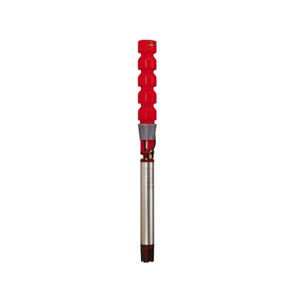
Axial-flow pump WCXHimpellerwaterwith electric motor
Add to favorites
Compare this product
Characteristics
- Technology
- impeller
- Fluid
- water
- Operation
- with electric motor
- Domain
- industrial
- Applications
- sump, for flood prevention
- Other characteristics
- horizontal mount, high-efficiency, axial-flow
- Flow
Max.: 115,000 m³/h
(4,061,186.67297 ft³/h)Min.: 7,000 m³/h
(247,202.66705 ft³/h)- Head
8 m
(26'02" )
Description
Product Features
•Flows to 30,000 to 500,000 gpm or more (7,000 to 115,000 m3/h)
•Heads to 26 ft (8 m)
•Up to 132" Discharge and above (3352 mm)
•100 to 135 RPM
DECADES OF PROVEN PERFORMANCE IN AREAS WHERE FLOOD CONTROL IS A WAY OF LIFE
•The major advantage of this type of pump is that the rotating element sits “high and dry” away from the corrosive effects of the pumped water when pump is not in use. Thus the horizontal design offers longer life time compared to vertically installed pumps.
•Because the horizontal pump sits out of the water, sump excavation is reduced resulting in lower construction costs.
•Pump casing is split horizontally; the top casing is removable exposing complete rotating assembly for ease of maintenance and removal.
•Split casing allows shipping the pump in lower weight pieces reducing the need for a bigger crane, therefore lowering the cost of construction and transportation.
•Product features include a wide choice of impeller and bowl materials and the ability to customize each pump to specific application requirements.
•The WCXH pump can also be installed in a vertical configuration when needed.
•Readily-accessible service centers, technical know-how, spare parts, and support to ensure minimal downtime costs and the most cost-effective operations.
Catalogs
No catalogs are available for this product.
See all of Alcon‘s catalogs*Prices are pre-tax. They exclude delivery charges and customs duties and do not include additional charges for installation or activation options. Prices are indicative only and may vary by country, with changes to the cost of raw materials and exchange rates.












